History
The House of Pico della Mirandola were a noble family first known for one Hugh, a vassal of Matilda of Tuscany in the 11th century. In the following centuries, members of the family were podestà in Modena and Reggio Emilia, until, in 1311, Francesco Pico received from Emperor Henry VII the fiefs of Quarantoli and San Possidonio in reward of his help during the war against the Este. In 1353 Paolo Pico obtained from the bishops of Reggio the fief of San Martino Spino, and in the following year Emperor Charles IV freed the Pico from the dominance of the bishops, placing Mirandola directly under imperial suzerainty.
In 1432 Giovanni Pico received from Emperor Sigismund the title of Count of Concordia. The city was strongly fortified, and, in the course of the Italian Wars, it was allied with France. It was besieged two times by Papal troops under Pope Julius II (1511), who personally attacked its walls, and Pope Julius III (1551–1552). In the second occasion, the fortress resisted successfully under the command of Ludovico Pico and Piero Strozzi. In 1597, after returning under the imperial umbrella, Mirandola obtained the title of city and the Picos were named Princes of Mirandola and Marquesses of Concordia. In 1617 Alessandro I was finally declared duke.
The main economic activities in Renaissance times were animal husbandry, agriculture and, starting from the 17th century, silk clothes. The duchy however suffered from internal crisis and the numerous military operations in the area, such as in 1630 when it was ravaged by the imperial troops.
The last lord was Francesco Maria Pico, who was charged with treason after having been forced to cede the fortress to the French. The duchy was acquired by the Duchy of Modena under the House of Este, who bought it for 175,000 golden doppie.

Ludovico III Gonzaga of Mantua, known as the Turk, also spelled Lodovico was the ruler of the Italian city of Mantua from 1444 to his death in 1478.

Giovanni Francesco Pico della Mirandola (1470–1533) was an Italian nobleman and philosopher, the nephew of Giovanni Pico della Mirandola. His name is typically truncated as Gianfrancesco Pico della Mirandola.
Giovanni I Pico was an Italian nobleman and condottiero. He was lord of Mirandola and Concordia from 1399 until his death.

Ludovico Gonzaga was an Italian nobleman and condottiero, a member of the House of Gonzaga branch of Sabbioneta.

Galeotto I Pico della Mirandola was an Italian condottiero and nobleman, Signore of Mirandola and Concordia. He was noted by contemporaries for his tyranny. The son of Gianfrancesco I Pico, Galeotto initially allied himself to the Duchy of Ferrara, first fighting for Duke Borso d'Este and then Ercole I d'Este, with whom he formed a strong bond. In 1486, he switched allegiance to Ludovico Sforza, Duke of Milan. He fought his brother Antonio for the Signoria of Mirandola. He was ultimately successful in the last battle, taking his brother's place in 1491, which was reaffirmed two years later. He died in 1499 and was succeeded by his son Giovanni Francesco.

Galeotto II Pico della Mirandola, lord of Mirandola, was an Italian condottiere.

The Castle of the Pico is a castle in the city center of Mirandola, in the province of Modena, Italy.
The Mirandola witch trials took place in Mirandola in the Duchy of Mirandola between 1522 and 1525. It resulted in the death of ten people, who were burned alive at the stake for witchcraft on the square.
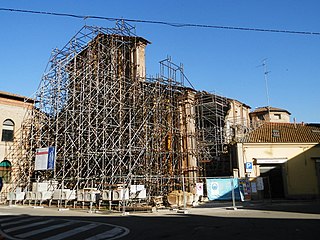
The church of San Francesco is a church located in Mirandola, in the province of Modena, Italy.

The Mirandola mint, also known as the mint of the Pico della Mirandola, was the mint of the Duchy of Mirandola.

Francesco Maria Pico, also known as Francesco Maria II Pico della Mirandola to distinguish him from his father, was an Italian nobleman, third Duke of Mirandola and fourth Marquis of Concordia.
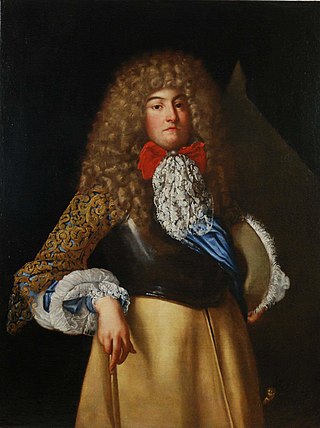
Alessandro II Pico della Mirandola was an Italian nobleman, soldier and patron of the arts, second Duke of Mirandola and third Marquis of Concordia from 1637 until his death.
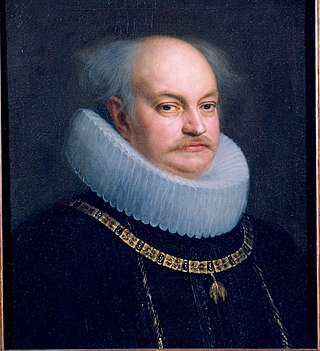
Alessandro I Pico della Mirandola was an Italian nobleman and military man, second Marquis of Concordia (1602–1637), second and last Prince of Mirandola (1602–1617) and first Duke of Mirandola (1617–1637).

Brigida Pico della Mirandola was an Italian noblewoman, Princess Regent of Mirandola and Concordia for fifteen years, in the name and on behalf of her nephew Francesco Maria II Pico della Mirandola, whose grandfather was her brother Alessandro II Pico della Mirandola. She ruled despotically with a policy that led to the fall of the Duchy of Mirandola.
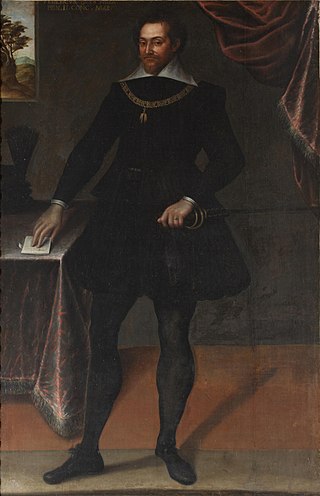
Federico II Pico della Mirandola was an Italian nobleman, last Count of Mirandola and Concordia (1592-1596) and first Prince of Mirandola and Marquis of Concordia (1596-1602).
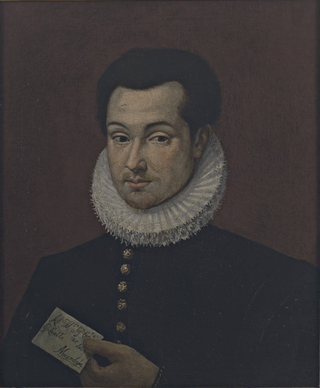
Galeotto III Pico della Mirandola was an Italian nobleman, third Count of Mirandola and Concordia from 1568 to 1592, the year of his abdication due to health problems in favour of his brother Federico II Pico della Mirandola.

The siege of Mirandolain 1321, also known as the siege of Duke Passerino, was a military conflict involving Francesco I Pico, first lord of Mirandola, against Rinaldo dei Bonacolsi, better known as Duke Passerino, lord of Mantua.
Francesco II Pico della Mirandola was an Italian condottiero and nobleman, belonging to the House of Pico, who in 1354 regained the family domains of Mirandola and Concordia, which had fallen into the hands of the Gonzagas, and was lord of them until his death (1399).
The siege of Mirandola in 1502 was a military conflict involving Giovanni Francesco II Pico della Mirandola against his younger brothers Federico and Ludovico, who bombarded Mirandola for 50 days. Defeated and imprisoned, Francesco II was released only with the promise of cession of the dominions, then retiring into exile for eight years.
This page is based on this
Wikipedia article Text is available under the
CC BY-SA 4.0 license; additional terms may apply.
Images, videos and audio are available under their respective licenses.
















